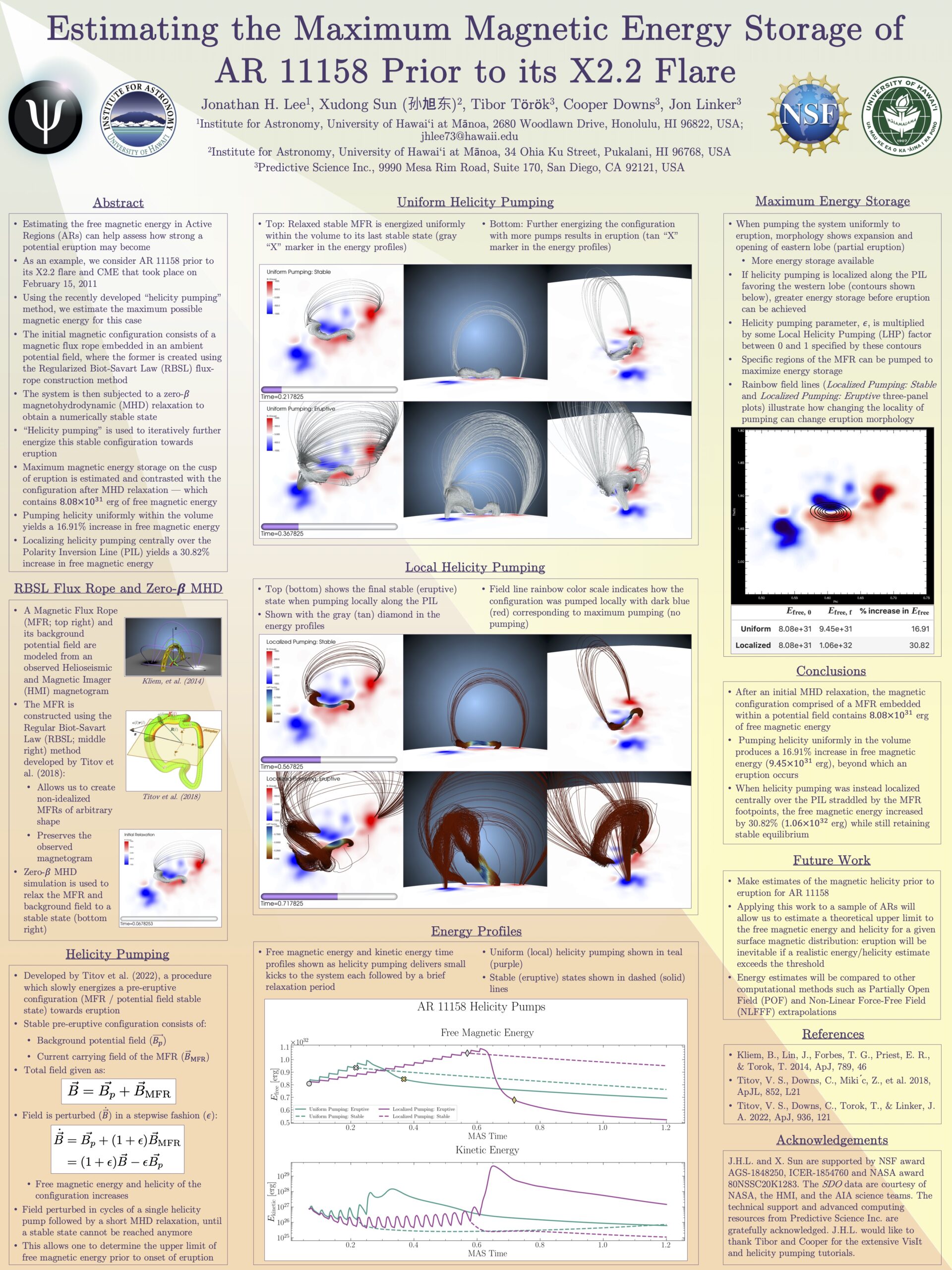Authors: Jonathan Lee (Institute for Astronomy, University of Hawaii at Manoa), Xudong Sun (Institute for Astronomy, University of Hawaii at Manoa), Tibor Török (Predictive Science Inc.), Cooper Downs (Predictive Science Inc.), Jon Linker (Predictive Science Inc.)
Here we use the recently developed “helicity pumping” method to estimate the maximum possible magnetic energy that could be stored in NOAA active region (AR) 11158 prior to its X2.2 flare. We first use the Regularized Biot-Savart Law (RBSL) flux-rope construction method paired with a zero-beta magnetohydrodynamic (MHD) relaxation to create a configuration consisting of a stable magnetic flux rope embedded in the ambient potential field. The “helicity pumping” method is then used to iteratively further energize the stable configuration towards eruption. The maximum magnetic energy storage on the cusp of eruption is estimated and contrasted with the initial MHD relaxation. Pumping helicity uniformly within the modeled volume yields an 16.91% increase in free magnetic energy from the initial relaxed state. When helicity pumping was instead localized centrally over the Polarity Inversion Line (PIL), straddled by the flux rope footpoints, the free magnetic energy increased by 30.82 % from the initial state. The system stored 1.06 x 10^32 erg of free magnetic energy while the initial state contained 8.08 x 10^31 erg. Future work includes making estimates of the magnetic helicity prior to eruption. Applying these methods to a sample of ARs will allow us to estimate a theoretical upper limit to the free energy and helicity for a given surface magnetic distribution: eruption will be inevitable if a realistic energy/helicity estimate exceeds the threshold.


